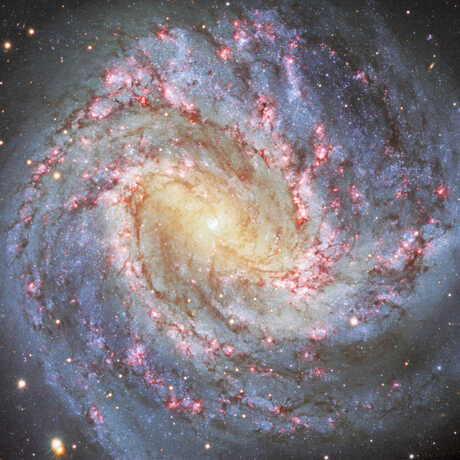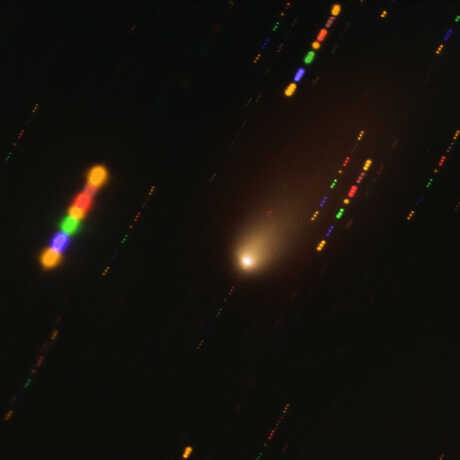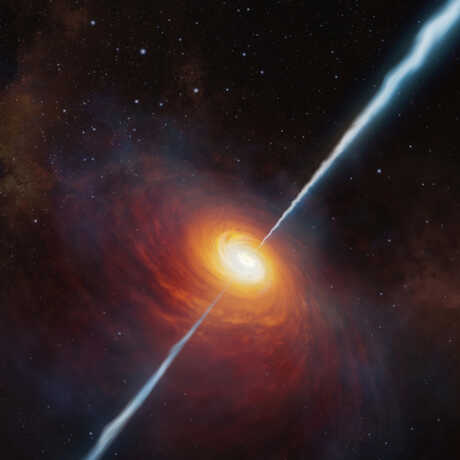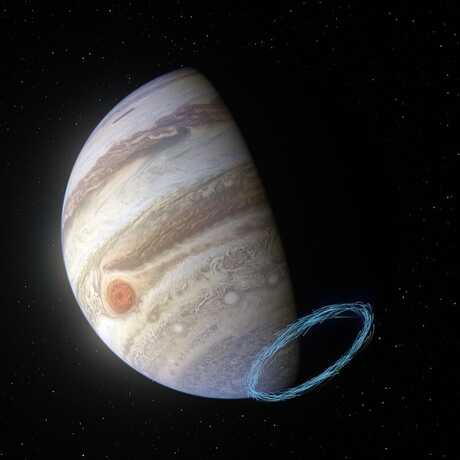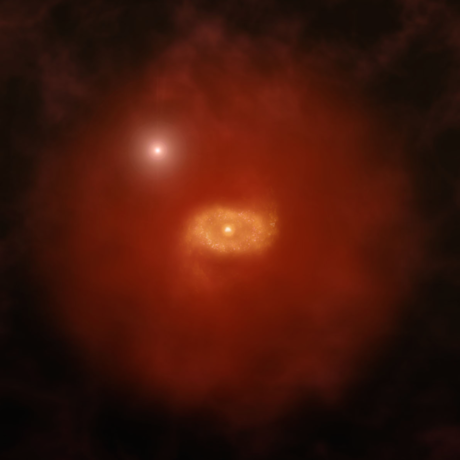Universe Update
Chilean Observations: Exoplanets

This illustration depicts a planet partially hidden in the glare of its host star and a nearby companion star.
Looking for planets outside our solar system has gotten easier over the last couple of decades. The Kepler and K2 missions discovered thousands of exoplanets, and now there’s the Transiting Exoplanet Survey Satellite (TESS). But these missions have limitations to what they can see: they find planets by observing a dip in the brightness of their parent stars. But what if the brightness is actually two stars? And what if the planet is still forming?
Ground-based telescopes can help! Not only have they been used to confirm exoplanets found by the satellite missions, they also are making discoveries of their own, using new tools and techniques. This week in our regular series, Chilean Observations, we’ll look at a few of these new findings from the Gemini South Observatory and the Atacama Large Millimeter/submillimeter Array (ALMA).
Could we be missing the real Tatooine? An Earth-sized planet orbiting a binary star? That’s the question Dr. Katie Lester of NASA’s Ames Research Center asked. Since half of the stars in our galaxy reside in binary star systems, it’s a pretty large and reasonable question. Plus, so far, only large planets have been discovered in binary systems. So Lester and her colleagues took a look at planet-hosting stars identified by TESS using Gemini South and its Hawaiian partner Gemini North. The team used a technique called speckle imaging that allows astronomers to see past the blur of Earth’s atmosphere by taking many quick snapshots in rapid succession. By combining these observations from the two telescopes, it is possible to cancel out the blurring effect of our atmosphere, which affects ground-based astronomy by causing stars in the night sky to twinkle.
Sure enough, the researchers found dozens of single stars identified by TESS were actually binary systems. If the data is hiding a second star, what else could it be hiding? “Astronomers need to know whether a star is single or binary before they claim that no small planets exist in that system,” explains Lester. “If it's single, then you could say that no small planets exist. But if the host is in a binary, you wouldn't know whether a small planet is hidden by the companion star or does not exist at all. You would need more observations with a different technique to figure that out.” The study was published last month in the Astronomical Journal.
Have you had a chance yet to check out our latest show, Big Astronomy: People, Places, Discoveries (now playing at Morrison Planetarium and other planetariums around the world)? Chilean observatories and the people who run them are the Earthbound subjects of the production, with planet formation at the heart of the cosmological part of the story—the discoveries as mentioned in the subtitle. Last month, two studies from ALMA shed light on different aspects of planet-forming disks, using both dust and gas observations. The first looked at dust gaps in disks and found that higher mass stars are more likely to be surrounded by disks with gaps in them (see the second image above), and that these gaps directly correlate to the high occurrence of observed giant exoplanets around such stars. This may seem obvious, but there had been some doubt of this due to the distance of these gaps to their stars, and the fact that giant exoplanets were often found much closer in. “We believe that planets that clear the gaps will migrate inwards later on,” explains co-author Dr. Gijs Mulders of the Universidad Adolfo Ibáñez in Santiago, Chile. And it could help with further discoveries, he says. “This new understanding of stellar mass dependencies will help to guide the search for small, rocky planets like Earth in the solar neighborhood.”
In the second study, Teresa Paneque-Carreño and her colleagues used ALMA to measure the gas velocity of Elias 2-27 and confirmed that gravitational instabilities play a key role in planet formation. In 2016, a team of scientists using ALMA discovered a pinwheel of dust swirling around the young star. The spirals were believed to be the result of density waves—commonly known to produce the recognizable arms of spiral galaxies, including our own Milky Way Galaxy—but at the time, had never before been seen around individual stars.
During recent observations, the team found the star exhibiting evidence of gravitational instabilities which occur when planet-forming disks carry a large fraction of the system’s stellar mass. “It’s like looking at a crime scene and trying to guess what happened,” Paneque-Carreño says.
“How exactly planets form is one of the main questions in our field. However, there are some key mechanisms that we believe can accelerate the process of planet formation,” she continues. “We found direct evidence for gravitational instabilities in Elias 2-27, which is very exciting because this is the first time that we can show kinematic and multi-wavelength proof of a system being gravitationally unstable. Elias 2-27 is the first system that checks all of the boxes.”
Image: International Gemini Observatory/NOIRLab/NSF/AURA/J. da Silva (Spaceengine)
